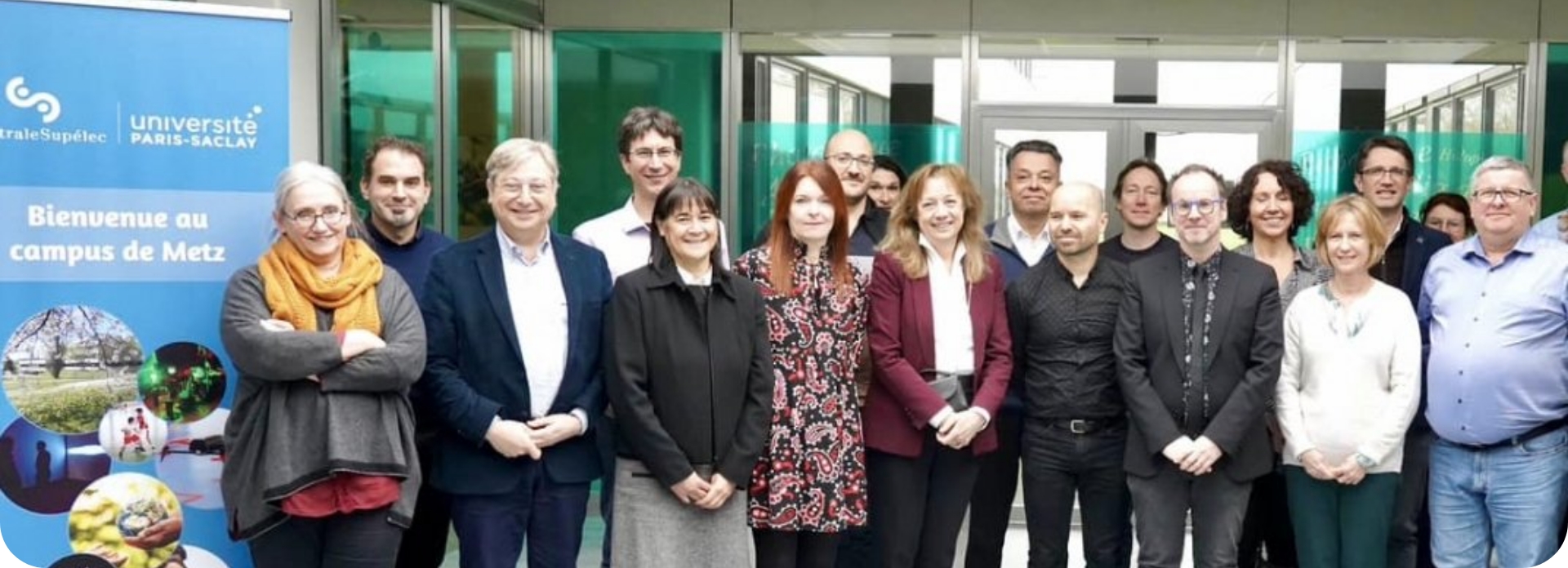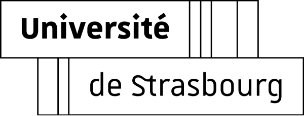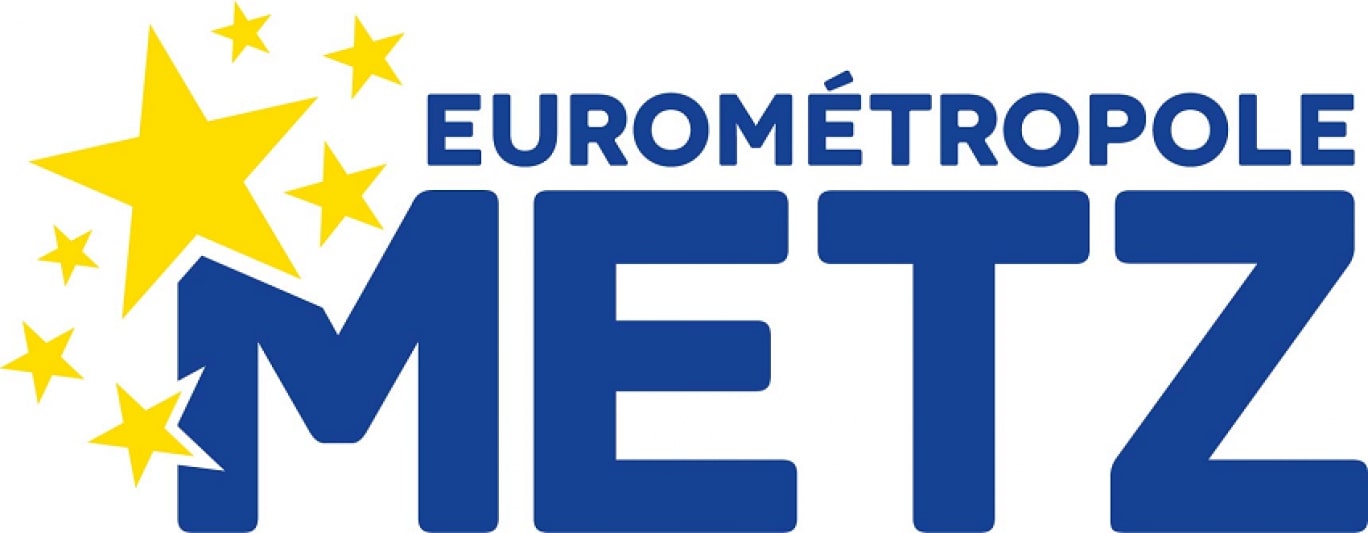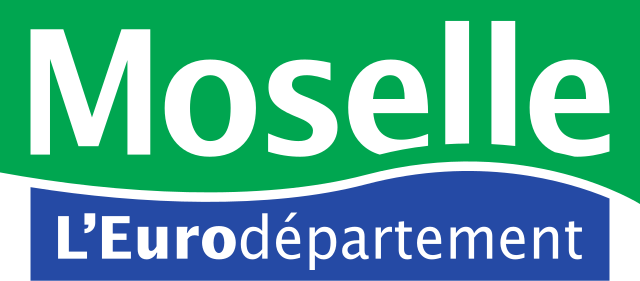CentraleSupélec is a scientific, cultural, and professional public institution which arose in January 2015 from the merger of L’École Centrale Paris and Supélec. As of today, CentraleSupélec is composed of four campuses in France (Paris-Saclay, Metz, Rennes, and Reims). In total, more than 5,000 students are enrolled at CentraleSupélec, 3,800 of whom are engineers. CentraleSupélec also gathers 18 laboratories or research teams.
CentraleSupélec is a founding member of Université Paris-Saclay, ranked 12th globally and 1st on the scale of continental Europe by the Shanghai Academic Ranking of World University (ARWU), it is also ranked 58th globally by Times Higher Education (THE).
A 100% subsidiary of MBDA, GDI Simulation imposes itself as the European leader in educational solutions and shooting training ranging from military defence to civil security. GDI Simulation offers:
- a full range of simulators which comes in three product lines: Combat Shooting Simulators (STC), Drive Simulators (SET), and Simulators for Behavior Training (SEC).
- senior product range and related services to improve the operational capabilities of its customers.
Grand Est Développement, the “innovation and international prospection company of the Grand Est Region”, was founded in 2018 on the initiative of the Grand Est Region and the CCI (Chamber of Commerce and Industry) Grand Est. Its goal: to accelerate significant environmental, digital and industrial change in the Grand Est region by way of the regional offering for innovative solutions.
Grand Est Développement is a team of 90 specialists at the service of those who offer innovative solutions, companies and territories. Its members participate to their innovation and transformation projects and contribute to the creation of new French and international companies in the Grand Est region.
To this end, the team deploys about fifteen missions. The agency is composed of 7 sites spread all over the territory.
The SATT (Technology Transfer Acceleration Company) Sayens brings forth promising scientific results, transforming them into innovations which meet the needs of companies and the market, sources of growth and job creation. Committed to making science the future of innovation alongside researchers and companies, Sayens benefits from the expertise of 6,500 researchers, 4,000 doctoral students from the 140 public research laboratories in the Grand Est (Lorraine and South Champagne-Ardenne, Troyes) and Bourgogne-Franche-Comté regions.
Since 2013, with an endowment of 34 million euros invested in 160 projects, Sayens enabled the creation of 31 startups.
Shareholders: Institut Agro Dijon, SUPMICROTECH – ENSMM, University of Franche-Comté, University de Lorraine, Université Bourgogne Europe, University of Technology Belfort-Montbéliard, University of Technology of Troyes, CNRS, Inserm, and Bpifrance on behalf of the state.
Université de Haute-Alsace counts 8 components in Mulhouse and Colmar where more than 11,000 people take nearly 200 training courses.
Université de Haute-Alsace is a multidisciplinary university which ensures that the network of the national territory offers diverse academic options. Université de Haute-Alsace describes itself as a civic university, an involved participant in the life of the territory, dedicated to its students’ and personnel’s success, highly professionalising and fully incorporated within local, national, and international academic networks.
Relying on all its laboratories, Université de Haute-Alsace places research at the cutting edge of innovation in areas that define its strengths and centred on Mat-Light 4.0, a project of excellence based on international scientific recognition in the field of photopolymerisation, so as to become the one university of reference on a global scale. Université de Haute-Alsace intends to provide input on energy and environmental transition concerns.
Université de Lorraine is a public institution of higher education composed of 10 scientific departments gathering 60 laboratories and 9 collegiums which comprises 43 academic faculties, schools, and institutes, 11 of which are schools of engineering.
Close to 7,000 staff members work at Université de Lorraine, which welcomes more than 62,000 students each year. Consequently, Université de Lorraine establishes itself as an international, multidisciplinary, technological, and entrepreneurial university of research qualified for providing thoroughgoing answers to economical and societal challenges of the 21st century.
University of Luxembourg is an international multilingual and interdisciplinary research university. Founded in 2003, University of Luxembourg now boasts almost 7,000 students and over 2,000 employees from all over the world.
This university has three missions: promoting research, teaching higher education students, and contributing to the social, cultural, and economic development of the country. Research at University of Luxembourg focuses on major areas such as digital transformation, medicine, and health as well as sustainable and societal development. University of Luxembourg is composed of three faculties (Science, Technology and Medicine; Law, Economics and Finance; Humanities, Education and Social Sciences) and four interdisciplinary research centres (Interdisciplinary Centre for Security, Reliability and Trust – SnT; Luxembourg Centre for Systems Biomedicine – LCSB; Luxembourg Centre for Contemporary and Digital History – C²DH; Luxembourg Centre for European Law – LCEL).
University of Luxembourg is ranked fourth by Times Higher Education in the “International Outlook” category, and 25th in its “Young university” 2023 ranking. University of Luxembourg also appears in the list of the 250 best universities worldwide.
With its 3,100 students, the University of Technology of Troyes is one of the ten most important schools of engineering in France. The University of Technology of Troyes offers eight different training courses for engineers, nine distinct master’s degrees and three fields of specialization for doctoral students. The development policy of the UTT counts on its high-level research and ambitious international strategy.
The University of Technology of Troyes is a member of the Conference of Deans of French Schools of Engineering (CDEFI), the Conference of Grandes Écoles (CGE) and France Universités (Conference of University Presidents). The University of Technology of Troyes coordinates EUT+, an initiative of the European University of Technology. The University of Technology of Troyes is part of a network of French technology universities together with UTBM (Belfort-Montbéliard), UTC (Compiègne) and UTSEUS, created in Shanghai in 2005 and based on the same mode of operation.
The University of Strasbourg boasts more than 56,000 students, 20% of whom are international students. The University of Strasbourg is divided into eight campuses and gathers 152 buildings, covering a total floor area of 600,000 m². The University of Strasbourg is located in the “golden triangle of research” between Alsace, Baden-Württemberg and Switzerland.
Thanks to the research of excellence led within the establishment, the University of Strasbourg has been ranked among the top 150 best international universities and top 5 best French universities (2022 Shanghai rankings).
The university’s research activities revolve around three major domains including all disciplinary fields: Law, Economics, Management, Humanities and Social Sciences, Sciences and Technologies, Life Sciences and Health.
Nearly 3,300 members of the university study and work daily within 70 research units, 6 Support for Researchers units, and a mixed service unit, consisting of over 2,200 researchers and University lecturers and researchers and over 1,000 engineering, technical and administrative members.
The Collège doctoral de Strasbourg brings together ten graduate schools and counts 2,000 doctoral students with an average of 460 theses defended per year.
The University of Strasbourg ranks among the nine French universities labelled “Initiative of Excellence”. Launched in January 2021 with the CNRS (National center for scientific research) and the Inserm (National institute of health and medical research) as part of the IdEx (Initiative of Excellence) project and the “France 2030” program (a major investment plan set up to accelerate the digital and ecological transition), ITIs (Interdisciplinary Thematic Institutes) are at the heart of the development strategy of the University of Strasbourg.
Grand Est is a French administrative region born as a result of the merger of three former administrative regions: Alsace, Champagne-Ardenne and Lorraine.
The regional council of the Grand Est assists its 5.5 million inhabitants in their daily lives, and carries out ambitious policies in its areas of expertise: transportation, spatial planning, education, guidance, high schools, development of economy, culture, health, etc. Its goal: to make the Grand Est region an audacious territory, an area of success, where life is pleasant; at the forefront of major industrial, digital, environmental and energy transitions.
The Eurométropole de Metz is a métropole (french intercommunal structure) in the Moselle département in the Grand Est region, it is composed of 46 communes (municipalities) and is centred on the city of Metz, in the middle of Europe. The Eurométropole de Metz is home to 230,000 inhabitants, and an employment area of more than 500,000 inhabitants. The Eurométropole de Metz takes action in various fields such as economic, social, cultural development and organisation, spatial planning of the métropole, local housing and urban policies, management of public utilities, protection and enhancement of the environment and surroundings.
Moselle (57) is a French département in the Grand Est region. It is a part of Lorraine, historically and culturally speaking. This territory owes its name to the Moselle river, a tributary of the Rhine which flows through the western part of the area as well as in the city of Metz, its capital. The Département chose to territorialise its shares in order to accommodate the specificities of the territories, to be closer to service users and mobilize all types of citizen energy organisations (associations, collectivities…).
This proximity enables quicker responsiveness and improved quality of service. The management of equipment and service users is thus adapted to their situation and environment. More than 3,200 public sector workers of the implement the département’s policies each day to provide the best service for the inhabitants of Moselle.













